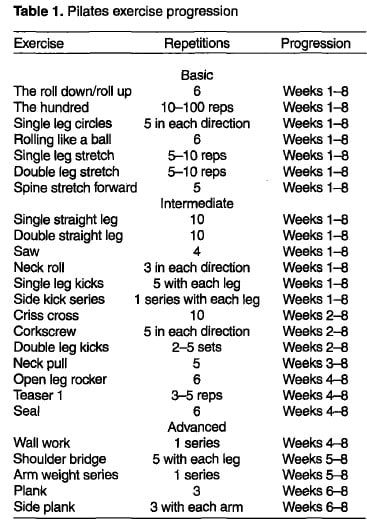|
Article reviewed: Rogers K, Gibson AL. Eight-week traditional mat Pilates training-program effects on adult fitness characteristics (2009) Pubmed abstract Review Author: Enja Schenck M.S. Review Date: January 2018 Background and objective: The current study was published in the peer-reviewed journal Research Quarterly for Exercise and Sport in September 2009. The purpose was to assess changes in body composition, flexibility and muscular endurance following 8 weeks of traditional mat Pilates training in a group of healthy recreationally active adults. Research documenting physiological changes following a Pilates protocol was (and still is) limited. Methods (how was this research conducted): 22 physically active participants completed the full study: 9 adults, who were new to Pilates, were assigned to a Pilates mat program. 13 adults served as control group doing a self-prescribed, unsupervised cardio-vascular and strength protocol with the same frequency. Measurements:
Intervention:
Results: The control group demonstrated significantly greater abdominal and low back muscle endurance before the intervention. All measures except for weight, hip and thigh circumference improved significantly for the Pilates group, but not the control group, after the intervention. Limitations (things to keep in mind): The strengths of the current study are found in its program frequency and length, as well as its statistical calculations. It has, however, several limitations often encountered in exercise science research, which decrease internal and external validity. This doesn't mean that the results or conclusions are wrong, they can just be taken less seriously than the results of a study with greater validity: The number of participants was very small and mostly female, the participants had a relatively young average age due to the university setting, the groups weren't randomly assigned, the measurements weren't conducted blinded, and the control group’s exercise program was self-prescribed and unsupervised.. Implications (what this means for Pilates teachers): In spite of its limitations, this study is a great demonstration of the positive effects of a classical Pilates Mat program for clients. Its real importance however, lies in the fact that it is, to the author’s knowledge, the only study in MEDLINE that utilizes a classical Pilates protocol. This is indicated by the exercise selection and names, as well as the instructor’s background. She was certified at The Pilates Studio NY and trained with Elder Romana Kryzanowska. |
|
